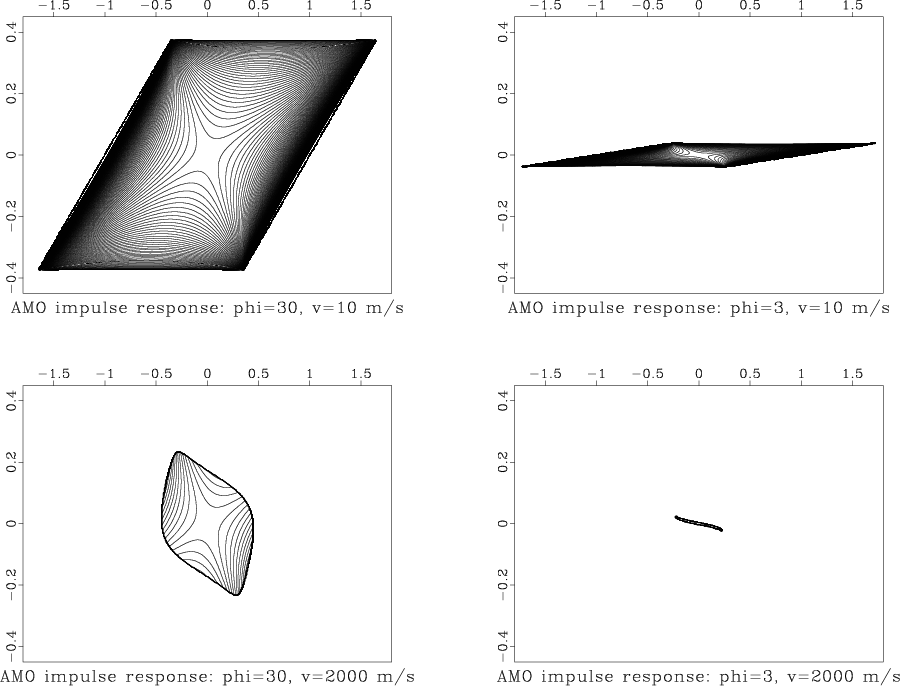Another old paper is added to the collection of reproducible documents:
A prospect for super resolution

Wouldn’t it be great if I could take signals of 10-30 Hz bandwidth from 100 different offsets and construct a zero-offset trace with 5-100 Hz bandwidth? This would not violate Shannon’s sampling theorem which theoretically allows us to have a transform from 100 signals of 20 Hz bandwidth to one signal at 2000 Hz bandwidth. The trouble is that simple NMO is not such a transformation. Never-the-less, if the different offsets really did give us any extra information, we should be able to put the information into extra bandwidth. Let us consider noise free synthetic data and see if we can come up with a model where this could happen.



 The favorite tool of all Madagascar users,
The favorite tool of all Madagascar users, 
 which corresponds to the following distribution of common midpoints
which corresponds to the following distribution of common midpoints  Optionally, sfbin can also output the fold map (using fold= parameter). The fold map shows the number of input traces in each output bin.
Optionally, sfbin can also output the fold map (using fold= parameter). The fold map shows the number of input traces in each output bin.  Parameters that control output grid sampling are nx=, dx=, x0= (for the second axis), ny=, dy=, y0= (for the third axis). Alternatively, one can specify the range values xmin=, xmax=, ymin=, ymax=.
Parameters that control output grid sampling are nx=, dx=, x0= (for the second axis), ny=, dy=, y0= (for the third axis). Alternatively, one can specify the range values xmin=, xmax=, ymin=, ymax=.